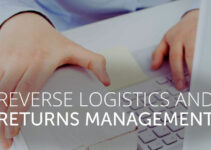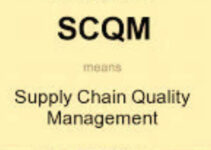Starbucks is a premium retail coffee chain American multinational company. Gordon Bowker, Zev Siegl, and Jerry Baldwin started the retail coffee chain brand in 1971. Today, we’ll discuss the value chain analysis of Starbucks; and the primary and supporting activities involved in the process of value chain analysis Example Company. They’re inbound and outbound logistics, operations, marketing, and services; infrastructure, HRM, technological development, and procurement of the premium coffee chain company as an application of value chain analysis.
Substitutes of Starbucks
- Dunkin Donuts
- Costa
- McDonald’s
- McCafe
- Panera Bread
- Costa Coffee
- Tim Horton
- Café Coffee Day
The value chain analysis of Starbucks would analyze the primary and supporting activities in the process of value chain analysis application. They’re inbound and outbound logistics, operations, marketing, and services; infrastructure, HRM, technology, and procurement. Here’s Starbucks value chain analysis company example as follows;
Value Chain Analysis of Starbucks
Let’s discuss the primary and supporting activities involved in the process of value chain analysis of Starbucks. It is an application of value chain analysis based on Porter’s model; some of the key elements and components of value chain analysis are as follows;
Primary Activities of Starbucks
Some of the five main primary activities in the value chain analysis of Starbucks as corporate value chain analysis example are as follows;
Inbound Logistics of Starbucks
I-Sourcing
Sourcing is the inbound logistical activity of Starbucks; it allows the company to source the best quality coffee beans from partners and suppliers in Africa, Latin America, and Asia. Along with coffee beans, the retail coffee brand gathers necessary raw supplies for its production process and they’re as follows;
- Non-dairy milk
- Napkin
- Coffee machine
- Coffee beans
Along with sourcing coffee brands, Starbucks is also vertically integrated and growing coffee beans. The plantation of coffee beans in different soils and geographical locations would provide a unique flavor and taste to the coffee.
II-Direct Contact with Farmers
Instead of outsourcing the purchasing process from any 3rd party suppliers, Starbucks establishes direct relationships with the farmers and reliable coffee suppliers. It makes sure that the company has access to the best quality coffee beans. However, the company also offers support to the farmers and coffee-growing communities with equipment to engage in sustainable practices; and expertise in maximizing the output of coffee beans.
III-Storage
Storage and refinement are also the inbound logistical processes of Starbucks, and they significantly impact the quality and value of the product. The coffee brand launches various types of practices and strategies and they improve the shelf life of the coffee beans.
Outbound Logistics of Starbucks
I-Stores
The outbound logistics deals with all those activities of Starbucks that the company employs to deliver the finished goods to the customers. They are like storage, distribution, and gathering the stock from the company and delivering it to the end consumers. However, Starbucks sells a vast majority of its products to customers through its direct retail stores and licensed stores of the company.
II-Distributing Partners
Starbucks has established a partnership with Nestle for the distribution of its products and goods. The coffee brand also offers home delivery service to customers in the US and the UK with the assistance of 3rd party delivery service providers like; Uber Eats, Just East, and Deliveroo. However, Starbucks carefully manages its outbound and delivery services.
Operations of Starbucks
I-Roasting Operations
Starbucks implements various forms of roasting operations to transform and convert raw coffee beans into various types of finished products that the company sells at a higher price by adding value. They’re as follows;
- Coffee capsules
- VIA ready brew
- Ground coffee
- Roasted coffee beans
II-Network & Locations
Starbucks has established a very large network comprising 35,711 retail stores in more than 84 countries across the world. According to an estimate, 61% of Starbucks stores are in China and the US, and they contribute significantly to the company’s profitability.
The other thing that adds value is the location of Starbucks stores at different locations to target different types of customer markets. For instance, Starbucks has established its stores in the following places;
- Rural locations
- Office buildings
- Off-highway locations
- Downtown and suburban retail centers
- University campuses
Marketing & Sale of Starbucks
According to an estimate, Starbucks will spend roundabout 416 billion USD on advertisement campaigns by 2022. The company is increasing its annual marketing and advertisement budget consistently. However, some of the marketing and advertisement strategies that the coffee brand employs for the promotion of its products are as follows;
- Customer relevant event
- New product ceremony
- Partnerships
- Opening of new stores
- Word-of-mouth marketing
- Sales promotion events
- Public relations
- Media advertisement
- Print media
- Sales training
- Market research
Services of Starbucks
I-Customer Service
Starbucks offers excellent customer service that would increase the brand image and value of the company. Long queues of customers at the store raise concerns and questions about the productivity of employees and the customer service delivery process. However, some of the main services that Starbucks offers to its customers are as follows;
- Free Wifi
- No rushed service
- Satisfying customer expectations with speed
- Free coffee to Regular customers
- Recognizing regular customers with their names
Supporting Activities of Starbucks
Some of the four main supporting activities in the value chain analysis of Starbucks as corporate value chain analysis example are as follows;
Infrastructure
Starbucks has established an infrastructure of 35,711 retail location points in 84 countries across the world. The coffee brand has developed a functional infrastructure comprising financial accounting, general management, planning, and organizing. The company plans to develop an infrastructure of more than 55000 retail location points by the end of 2030.
Human Resource Management
Starbucks has a very large database of employees comprising more than 402000 employees. The coffee brand carefully focuses on the needs and demands of customers; involves them in the decision-making process, and offers them training and development to improve their skills and expertise. However, some employees are unhappy due to heavy work pressure, abusive behavior of customers, and understaffing.
Some of the awards and recognitions Starbucks has achieved relevant to HR are as follows;
- Best Employer for Women in 2021
- World’s Best Employer 2021
- Ranking in Forbes List of Best Employers for Diversity
Technological Development
Technological development plays a key role in adding value to the coffee chain brand. Starbucks employs the latest technology for conducting supply chain operations, production, and other areas to improve efficiency and customer experience. While developing new products and offering premium customer experience, the company employs the following technology;
- Machine learning
- Cloud computing
- Big data
- Artificial intelligence
Procurement
The procurement team of Starbucks has the responsibility of purchasing raw supplies and materials for the company to develop the final product. Their job also comprises establishing relationships with customers suppliers and farmers through service agreements, contracts, and procuring agreements. However, the objective of the company is to offer high-quality products to the customers
Conclusion: Starbucks Value Chain Analysis Example Company | Application of Value Chain Analysis
After an in-depth study of the value chain analysis of Starbucks; we have realized that Starbucks is the world’s leading premium retail coffee chain brand. If you are learning about Starbucks value chain analysis company example; then you should keep in mind the abovementioned primary and supporting activities involved in the process of value chain analysis Example Company. They’re inbound and outbound logistics, operations, marketing, and services; infrastructure, procurement, HRM, and technology as an application of value chain analysis.
Ahsan is an accomplished researcher and has a deep insight in worldly life affairs. He goes Live 3 days a week on various social media platforms. Other than research writing, he’s a very interesting person.


